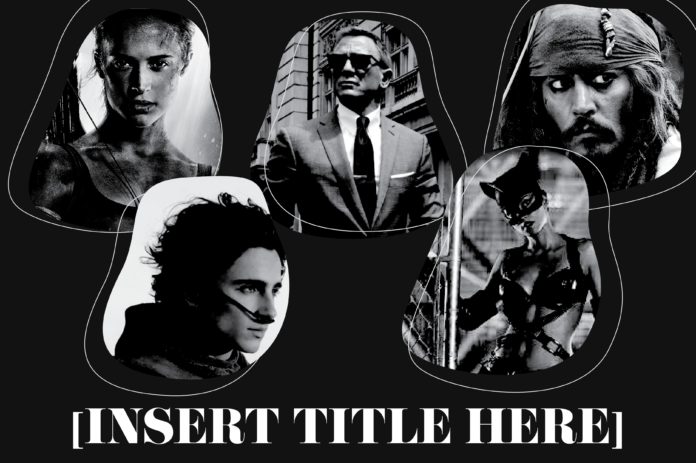Movie posters just aren’t what they used to be, thanks to “Marvelification” rendering them void of creativity
By ANGIE CUMMINGS — arts@theaggie.org
The iconic movie poster is truly a lost art form. It is now a rare occurrence that we pay any mind to the design of a movie’s promotional cover when posters of movies past still adorn many of our walls. Some of these icons have even become infamous, like that of Quentin Tarantino’s “Pulp Fiction,” which is often seen as an immediate red flag to have up in one’s room. Of course, there are famous movie posters that have not been vilified, and still function as great pieces of wall decor, including that of “Breakfast at Tiffany’s,” “Jaws,” “The Godfather” and even relatively simply designed ones like “The Graduate.”
When the question as to why contemporary movie posters by and large do not compete with these icons is asked, it is easiest to identify one culprit: Marvel Entertainment. Their superhero movie posters have been relentlessly ridiculed online over the years, and yet they keep coming out with these dizzyingly designed posters, often with severe cases of “floating head syndrome.”
While the vast majority of Marvel movie posters are guilty of this, it is necessary to give a dishonorable mention to “Spiderman: Homecoming.” If you were to simply search the title paired with the word “poster,” you’d be confronted with tweets, articles and subreddits discussing how visually displeasing it is. The poster consists of essentially every main cast member lazily photoshopped along the right side of the poster, all floating above the New York skyline. From a design perspective the poster feels disjointed; just looking at it, it’s genuinely confusing what the movie is supposed to be about, as it gives no indication as to what the feeling, theme or concept of the movie is — all we know is that Spiderman is there, as is Iron Man, and that the Washington Monument is in New York?
While I could go on for days discussing my frustrations with just Marvel posters, it is important to recognize this is not just a Marvel problem. Movie posters from across genres and studios have been on a steady decline since the beginning of the 21st century. The “Marvelification” of movie posters has quickly spread across almost any sci-fi or large-scale action film, first hitting the newest Star Wars trilogy, and most recently with the highly-anticipated “Dune” remake. Again with the floating heads… At least there was some consideration to slightly unify the eight actors floating above a desert, but it is still completely void of any creativity or feeling.
While it would help me sleep at night if this movie poster issue was reserved for these CGI-filled, battle-focused films (that are often driven by the starpower first and the narrative second), this is sadly not the case. “Last Night in Soho,” a beautifully made and musically driven psychological horror film set in London and split between the 1960s and the present, and which many were excited to see simply because it was an original concept, underdelivered in the very first glimpse of the film. Unfortunately, if you blur your vision just slightly, this poster could easily be replaced with one from “Star Wars: The Force Awakens,” with its division of red and blue glowing hues, floating heads and the central character placed right in the middle.
Why would such a creative film resort to such an overdone and underwhelming promotional poster? The answer most likely lies in the fact that movie promotion is heavily controlled by marketing analytics, giving way to people creating posters with the first goal being to optimize box-office sales and hitting their target audience, rather than making something memorable and striking. Movie posters now often prioritize packing it full of the stars who will draw in audiences, and bright colors to distinguish the good and bad, instead of creating something that is first and foremost visually pleasing and hints at the overall feeling of the film.
While many of the beautiful older movie posters were paintings or handmade collages, it doesn’t take a design major to realize you can still make something truly moving with the Adobe suite. A poster that defied current abysmal poster trends, and has thus boosted the buzz around the film itself, is the new Princess Diana film, “Spencer.” The first poster that came out was minimal and striking, immediately going viral on Twitter, and yet it was just a photo of Diana (played by Kristen Stewart) collapsed into a huge, beautiful gown. This instance is proof that an understated marketing technique can still wow audiences, and prioritizing the emotion of a film (in this case,despair and anguish) over everything bright and flashy won’t tank sales.
I have no hope for Marvel movie posters to turn over a new leaf, but at this point I am begging filmmakers to just put the slightest bit of effort into their promotional images, if only to make it easier to enjoy movies again.
Written by: Angie Cummings — arts@theaggie.org





